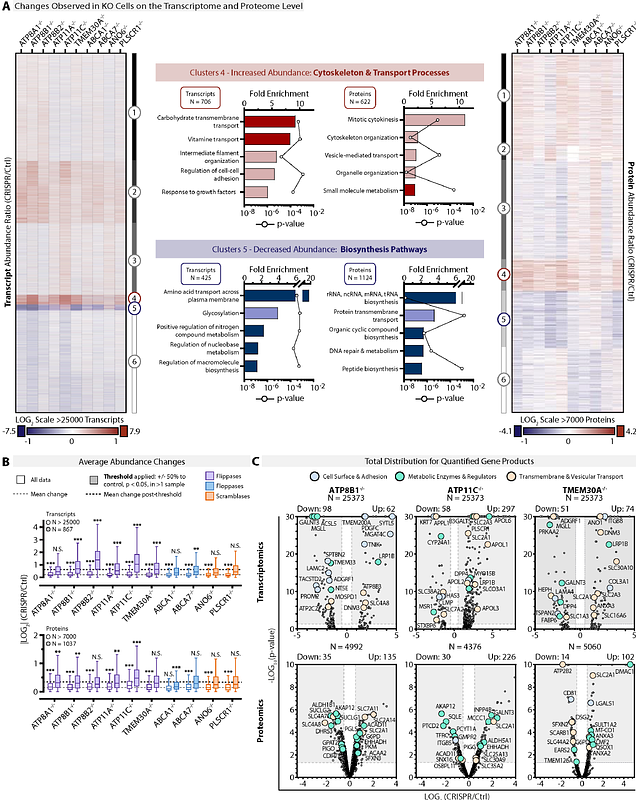Disruption of Plasma Membrane Lipid Asymmetry Alters Cellular Energetics

Disruption of Plasma Membrane Lipid Asymmetry Alters Cellular Energetics
Nadler, A.; Barahtjan, P.; Cook, K. C.; Bocan, V.; Lennartz, H. M.; Jumel, T.; Schuhmann, K.; Traikov, S.; Bölig, K.; Kuhn, S. M.; Jimenez-Lopez, C.; Alves, T. C.; Shevchenko, A.; Rodenfels, J.
AbstractBiological membranes often feature an unequal and actively maintained concentration gradients of lipids between bilayer leaflets, termed lipid asymmetry. Lipid asymmetry has been linked to many cellular processes, but the mechanisms that connect lipid trans-bilayer concentration gradients to cellular functions are poorly understood. Here we systematically map the cellular processes affected by dysregulation of lipid asymmetry by knocking out flippases, floppases, and scramblases in mammalian cells. We identify broad alterations to core metabolic pathways including nutrient uptake, neutral lipid turnover, pentose phosphate pathway and glycolysis. Lipidomics, respirometry, lipid and metabolic imaging, and live-cell calorimetry revealed elevated neutral lipid and ATP consumption rates which are coupled with increased heat loss per unit of biomass synthesized despite slower growth. This suggests that compensatory maintenance of lipid asymmetry strains the cellular energy budget, inducing a shift from a growth-promoting anabolic to a more energy-using catabolic state. Our data indicate that lipid asymmetry and its active maintenance is key for proper cell energetics, highlighting its putative role as a cellular store of potential energy akin to proton and ion transmembrane gradients.